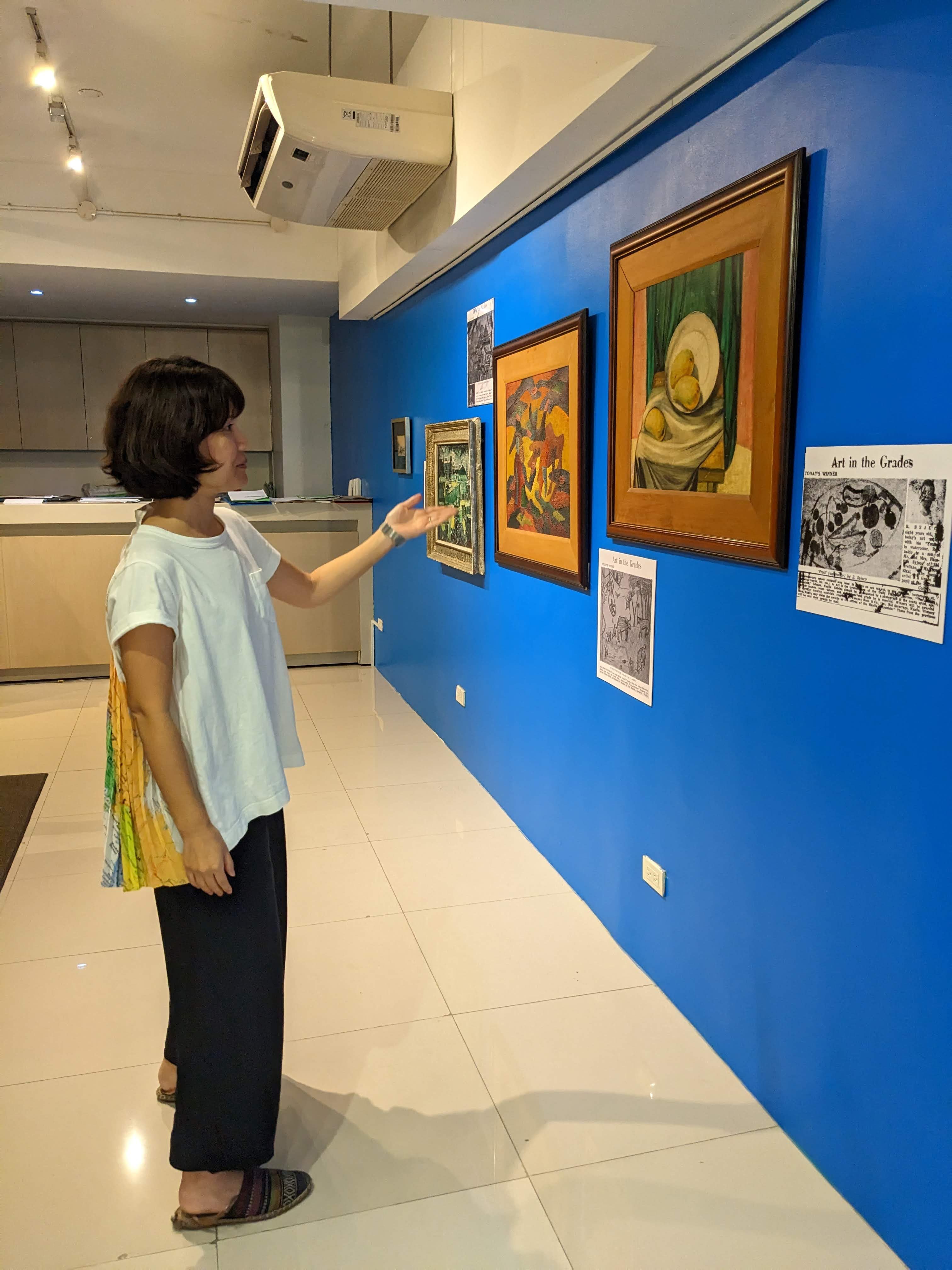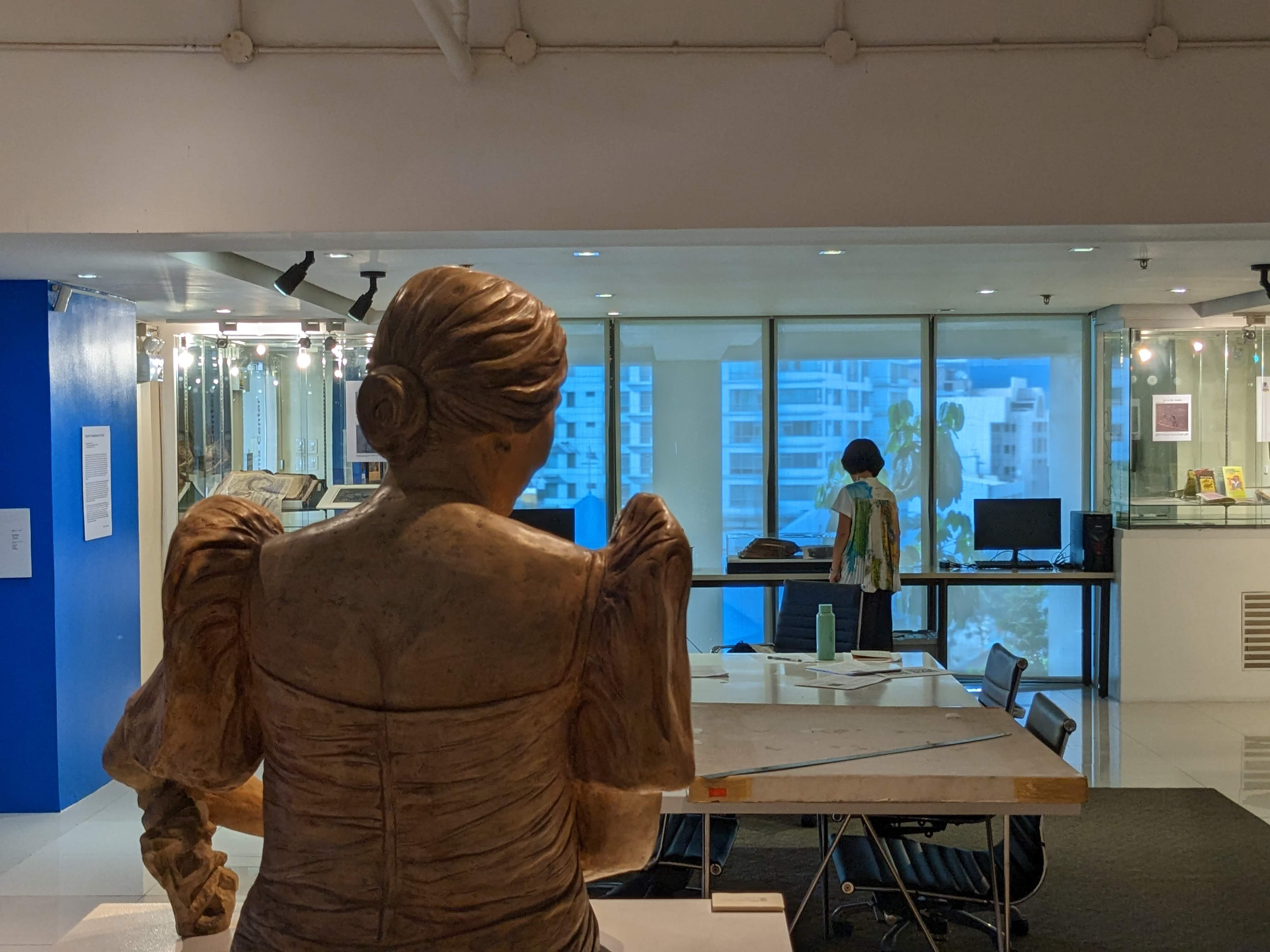In the second stanza of Jose Garcia Villa’s poem Be beautiful, noble, like the antique ant, the narrator expressed how the titular insect will be found, despite its apparent tracelessness, because “the universe is not so small.” With certitude, he ended the stanza with: “Somewhere: Exact: they will be found.”
When Mayumi Hirano came across the poem as she was preparing for her exhibit at the Purita Kalaw-Ledesma (PKL) Center, she instantly resonated with the character and its journey, connecting to both the ant and its observer. With certainty, she picked the line “Trace the tracelessness of the ant” to stand as the exhibit’s title. Mayumi felt like the resilient ant scrounging for food, akin to her looking for materials related to her research. Mayumi also acted like the observer attempting to trace the traceless ant, as she connects and makes sense of the archival puzzle pieces she collects.
It’s been almost a decade since she received a grant to research art collectives in the Philippines. That’s when she learned about Black Artists in Asia (BAA) which initiated the Visayas Islands Visual Arts Exhibition and Conference (VIVA ExCon) in 1990. What piqued her interest more in VIVA ExCon was the participation of Japanese artists in its 1992 iteration which led her to discover a BAA annual report in 1986 that established a link between the association and a Japanese artist, Seizo Tashima.
To say that the exhibit is the intended outcome of her years-long effort would, surprisingly, be inaccurate. When she started digging materials related to VIVA ExCon 1992 in 2018 (more or less spending five years already on this research), it did not cross her mind to exhibit her research materials. To understand how the unplanned pipeline from research to exhibit came about, I sat down with Mayumi for an interview at the PKL Center.
Can you tell us about your research process in general?
I try to gather as much material as possible. I was able to see the photographs personally kept by individuals. Many of these are kept by Nening Villanueva who was part of the BAA. I usually look at each image in detail, then I get clues from that. Sometimes looking at an image tells me about the relationship of people. Who is not in the photograph? Who is always in the photograph?
How people kept these photographs also tells me about their understanding of exhibition-making. For example, for the Japanese artists who came here for VIVA ExCon 1992, it’s a platform to show their art. I was particularly intrigued by the photographs kept by those working behind the scenes like Nening, friendship and the sense of family were the central force in making things possible. For them, it becomes a personal memory, so it goes to their family album.
How is looking at photographs from personal archives different from flipping through Purita’s scrapbooks, an archive of her own as well?
Flipping through Purita’s scrapbooks also felt personal, there was also an intimacy with it.
Even when just viewing it on a computer?
Yes, even that. It was a bit similar to going through other people’s personal archives. I found random clippings in her scrapbooks that probably do not fit an art historian’s interest. That’s when I felt that maybe, this is her. When Purita also clipped articles by and about children in her scrapbooks, like the drawings in the Art in the Grades column in The Manila Chronicle featured in this exhibit, that’s where I found her interest in children.
[There are also explicit expressions by Purita on how she perceived a child’s place and role in the art world. In her master’s thesis “A Critical Analysis of Modern Painting in the Philippines Today” submitted to the University of the Philippines Fine Arts in 1955, she wrote a chapter on teaching art to elementary students who, in the future, will be the ones to develop the artscape. In general, she regarded the importance of education in shaping a child’s identity as she has also written in her 1994 memoir And Life Goes On when she spoke about her own and her children’s schooling.]
How has being a mother helped in adding nuance to the motif of children in this exhibit?
In terms of perspectives, it’s not just about putting materials to their eye level. They also have a different way of looking at the world. I think having a child makes me more aware of that, which also helps to decenter myself a bit as a curator. In this show, I also want to raise the question of how we construct the notion and identity of a child from the point of view of an adult.
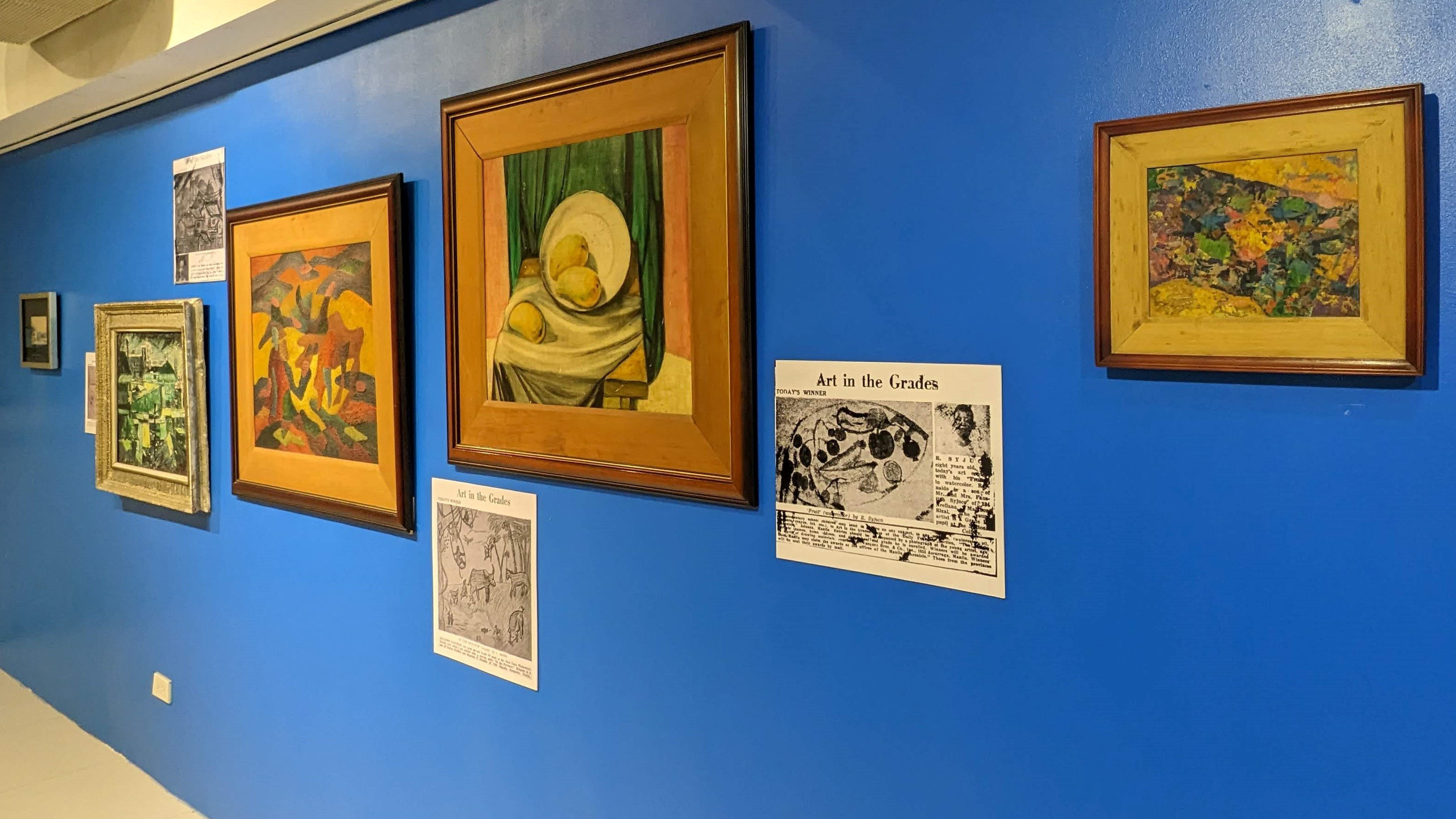
When we look at the works in Art in the Grades, those are supposed to be drawn by kids. But we can also see adult intervention in these. Who is choosing the featured drawings? Who is teaching them how to draw? Who is actually submitting these? Also in terms of education, it’s the adult who teaches the child how to become an artist.
Let’s talk about the space itself. You were involved in events with a larger exhibition area. What was it like working with a relatively smaller space?
They have unique challenges. If it’s a large space, we get worried if we have enough artworks. If it’s too small, do we have too many? My challenge was these vitrines, the mirror in them.
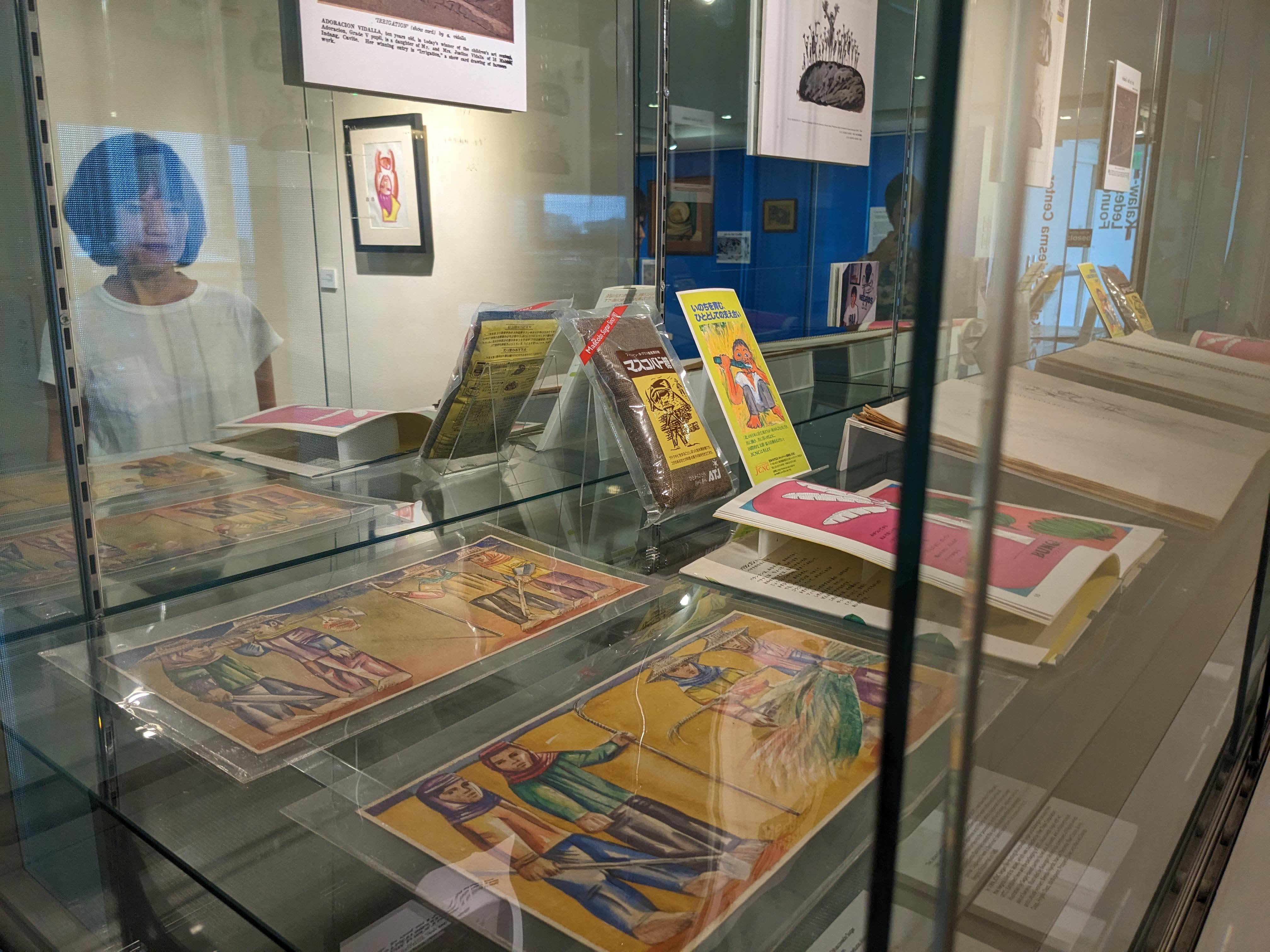
We look for reasons why we want to show a particular object in a glass display case. If it’s not an original copy, it doesn’t need to be placed inside because it doesn’t need protection from external factors. So if I have materials that are reproductions that I want to show inside, how do I show them in a conceptual way? I did this by juxtaposing reproduction and the original, to show different layers of how the original can be reproduced and how these reproductions have surrounded our lives. For example, the sugar packaging is in a way original, but it’s also reproduced. Also the pamphlet, the books. Maybe the original doesn’t mean so much anymore because the reproduction has become the original.
It’s like Walter Benjamin.
Exactly. Where is the aura?
I’m curious about the long wall here. Paintings by ‘masters’ like Manansala and drawings by children are placed side by side. Aside from their level of expertise, other layers of meaning can be explored here. How did you plan the layout?
I made a lot of drawings at home, but also tried out different layouts by visualizing the paintings using Manila paper cutouts.
How about the Art in the Grades clippings?
I worked with Boy Agimat [Mark Salvatus] to play around with it. At first, I was thinking of printing the original pages from Purita’s scrapbook where the clippings were pasted, but this will also include the other surrounding articles. I felt that was too much info. So I decided to approach this entire wall as one whole page.
Like what Purita did.
She got really creative on some pages. I want to pay respect to that.
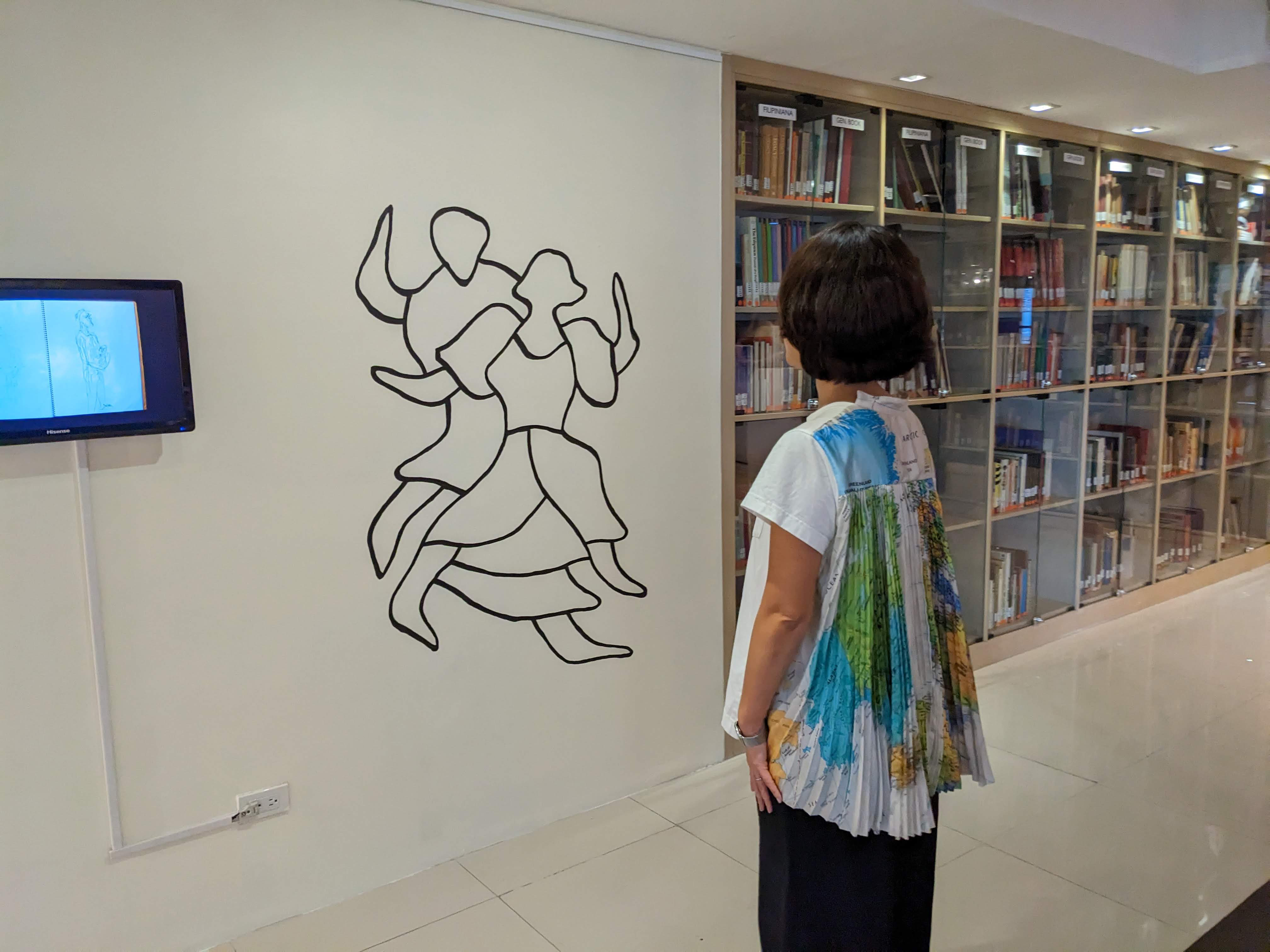
How about this mural?
I worked with Boy Agimat on this too. For me, making an exhibition is collaborative. I’m the type of person where I don’t have to decide everything by myself, especially the layout. It helps me to go through the space with someone else.
How do you envision the exhibition contributing to the larger art community?
Maybe there could be more conversations. That’s something I want to happen. The exhibit is also about continuation. Sometimes it’s just a job to curate where we tend to curate one thing and we move to the next. It’s understandable to be practical because working in the fast-paced artworld can be very precarious, and it can be physically and emotionally draining. But if you have your own project or research, it can give you confidence. And also a feeling of home.
The concept of home is something I’m thinking about these days as well. It’s the first time I heard how “research” can also be a home.
Maybe home is not a place, it’s like a space that you make in your mind.
When I was just starting, I was lucky enough to have a job constantly. But there’s always a question of how far one can go with a curatorial practice like this. When you have your own research going, even a small project can support you in a lot of ways.
The world is always changing, so it is important to both learn and unlearn skills. This will help shape curatorial practice, our own and in general. I think the curatorial industry is very small and competitive, if we only look at the opportunities at renowned museums or biennales. But there are different ways to practice, and you need to discover that. For me, it’s about finding a home where you can always go back and feel confident. And you can carry it wherever you are.
The interview is edited for flow and clarity.
Trace the Tracelessness of the Ant is on view at the PKL Center until October 16, 2023. The exhibit is free and open to the public. For more information, contact KLFI on their Facebook and Instagram accounts. To register, please visit https://tinyurl.com/KLFI-RegisterTraceExhibit2023.
Lk Rigor is currently pursuing MA Art Studies in UP Diliman. Aside from being a curator, she dreams of becoming a cat lady someday.

